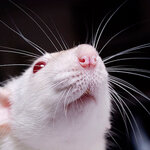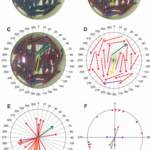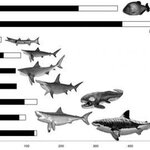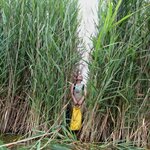Ecology & Zoology

A researcher at the Auburn University Museum of Natural History has reported the discovery 33 new trapdoor spider species from the American Southwest.
These newly described species all belong to the genus Aptostichus and the paper revises it to discuss all 40 species, which get attention for being named after celebrities – Aptostichus stephencolberti and Aptostichus angelinajolieae for Stephen Colbert and Angelina Jolie,
Aptostichus barackobamai for Barack Obama, the 44th president of the United States. Aptostichus bonoi is from Joshua Tree National Park but named for the lead…

Sex is not just an activity confined to higher animals such as mammals and not just for reproduction. The changes in offspring that result during reproduction are integral to the continuing adaptation and evolution of millions of species of plants, fungi and other organisms throughout the food chain.
Without such genetic shuffling, life wouldn't have adapted to the planet's frequently changing climates, or to new pests, parasites and predators. Our environment is always changing and emerging pressures, such as predicted rises in temperature for example, could threaten food production…

More questionable science abounds in a recent article ["Female Mammals Follow Their Noses to the Right Mates"] regarding mammal mating habits. Although the original paper was published in 2009, it hasn't improved with age.
One of the more telling problems occurs with the following quote:
Since the dominant males often chase away other males, it's hard to tell if females are choosing to mate with certain males, or are merely mating with them by default.
"The most convincing evidence for female mate choice in mammals comes from studies of captive mammals …carried out under controlled…

Czech researchers have hypothesized that carp in large tubs at Christmas markets possess a capacity to sense geomagnetic fields.
We've all heard of the hypothesis that birds use magnetoreception. It's been studied for 40 years and remains a hypothesis due to some difficulties. Homing pigeons that are time-shifted, for example, can't find their way back, which would mean they don't use magnetic fields. Other studies claim correlational results but they are not really convincing unless you go in determined to be convinced. Like every major animal on earth, humans have the cryptochrome…

A piranha's specialized jaw morphology and mean nature allow them to be in an extreme biting Hall of Fame. And it isn't a new development. While
Serrasalmus rhombeus, the black piranha, is a contender for most powerful bite for its size today, an ancient relative of piranhas,
Megapiranha paranensis, which weighed only about 20 pounds, delivered a bite with greater force more fierce than prehistoric whale-eating sharks, the four-ton ocean-dwelling Dunkleosteus terrelli and even Tyrannosaurus rex.
Modern piranhas can tear through soft tissue but Megapiranha paranensis was able to…

Phragmites australis is an invasive species of plant called common reed that grows rapidly into dense stands of tall plants and then pose an extreme threat to Great Lakes coastal wetlands.
a GROUP FROM Michigan Technological University', the US Geological Survey (USGS), Boston College and the US Fish and Wildlife Service (USFWS). have mapped the coastline of all five U.S. Great Lakes using satellite technologies and, combined with field studies along those coastlines to confirm the satellite data, their map shows the locations of large stands of the invasive Phragmites located within 6.…

New finds of 95 million year old fossils reveal much earlier origins of modern octopuses. These are among the rarest and unlikeliest of fossils. The chances of an octopus corpse surviving long enough to be fossilized are so small that prior to this discovery only a single fossil species was known, and from fewer specimens than octopuses have legs.
Everyone knows what an octopus is. Even if you have never encountered one in the flesh, the eight arms, suckers, and sack-like body are almost as familiar a body-plan as the four legs, tail and head of cats and dogs. Unlike our vertebrate cousins,…

Taking body size into account, the black piranha and the extinct megapiranha have the most powerful bites of carnivorous fishes throughout known history.
It's no surprise they were both in the finals: The piranhas' specialized jaw morphology allows them to attack and bite chunks out of much larger prey and their aggressive nature, relatively small size and accessible populations make them a suitable group of predatory vertebrates in which to study the evolution of extreme biting capabilities. Even at their small body sizes, diet studies indicate that piranhas will attack and bite chunks of…

In a discovery that may prove important for cognitive science, our understanding of nature and applications for robot vision, researchers at the University of Adelaide have found evidence that the dragonfly is capable of higher-level thought processes when hunting its prey.
The discovery is the first evidence that an invertebrate animal has brain cells for selective attention, which has so far only been demonstrated in primates.
Using a tiny glass probe with a tip that is only 60 nanometers wide - 1500 times smaller than the width of a human hair - the researchers have discovered…

The process involved in the formation of sperm cells involves symmetry, the equal chance that a mammalian egg will be fertilized by "male" sperm, carrying a Y chromosome or a "female" sperm, carrying an X chromosome, and that symmetry means that roughly the same number of males and females are born, which is necessary for the long-term survival of a species.
Yet that does not happen. Many mammals do not produce equal numbers of male and female offspring and the explanations are numerous - such as differential fertilization efficiencies of male and female sperm (Y chromosomes…